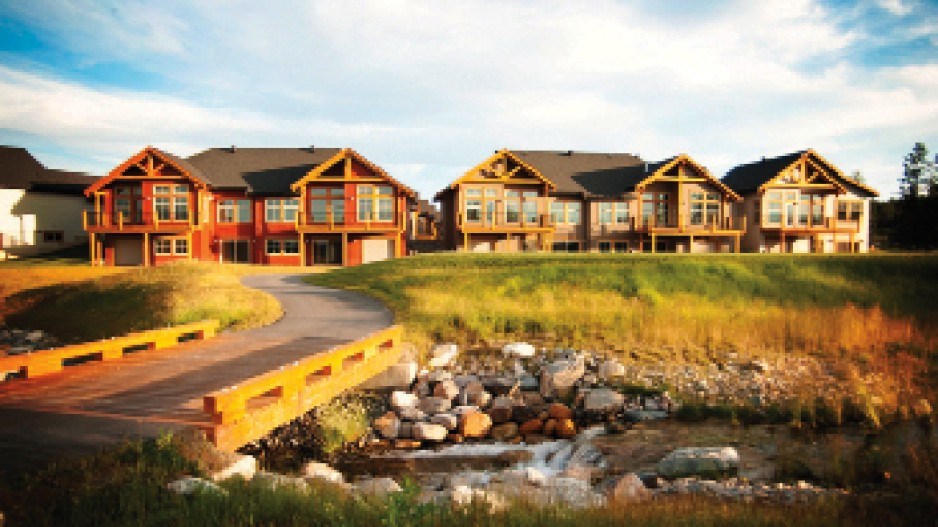Going live
A six-year hiatus in the reinvention of the Squamish waterfront will soon be over, as Cushman & Wakefield Ltd. begins marketing more than 100 acres of former industrial properties for development this month.
Squamish Oceanfront Development Corp., an arm’s-length company Squamish district council launched in 2004 to realize its vision for a revitalized waterfront, contracted the brokerage’s Vancouver office earlier this year to market 60 acres of former industrial land and 44 acres of fee-simple water lots.
“We would consider everything from an outright sale to a joint venture or equity partners. We would consider it all,” said Bill McNeney, chair of the district-owned developer. “We weren’t asking them to lease it or do a joint venture or an equity partnership; we were asking them to take it to the market and see where the interest was.”
McNeney explained that the process may lead a combination of straightforward development proposals to joint ventures or equity-sharing agreements.
Squamish has developed an electronic library of relevant documents and reports documenting the history and development potential of the site, which was previously set to be developed by Vancouver-based Qualex-Landmark Group.
Plans for a $500 million mixed-use community collapsed in October 2006 when Qualex-Landmark pulled out following changes to its original agreement that significantly altered the terms of the deal. A year of negotiations went up in smoke, and Squamish was back to the drawing board.
“We’re not saying that Squamish doesn’t have a bit of a checkered past as a community for developers who just ended up frustrated,” McNeney conceded, but he doesn’t believe the new process holds any surprises for local residents or developers.
Community consultations have led to a vision for the site that will see a third developed with residential units, a third with commercial space accommodating upwards of 2,000 jobs, and recreational or public amenities on the remainder.
McNeney is optimistic that a deal will be reached within 18 months.
“Dead and gone”
Sitting on the patio of the Watermark Beach Resort in Osoyoos two years ago, the conversation turned to the long-term prognosis for local recreational properties.
This columnist’s answer was conservative, perhaps to a fault, suggesting it would require at least seven years. Confidence and disposable cash were needed if the market was ever to match the heady days of the mid-2000s.
Dour opinions are seldom cheered, but a recent conversation with Colliers International senior vice-president Scott Brown reinforced the sense that the market has indeed sobered up.
“The recreational real estate market – from an investment perspective – is pretty much dead and gone. I don’t see any signs of it resurrecting,” said Brown, who has been overseeing sales at Boulder Creek, a residential community at the Gary Player-designed Wildstone golf course in Cranbrook.
Originally marketed in 2008, the 43-unit Boulder Creek development is now in the hands of receiver Ernst & Young. Colliers took over sales in 2011, slashing prices by 35% to 50%.
Colliers has sold 20 units this year alone, and has just 13 left to sell. Brown said buyers are seeking a future retirement property rather than a recreational investment, but stable pricing remains important.
“We held to our pricing, and then even increased it on some units,” Brown said. “People realized, ‘Hey, my values are solid if they’re moving up prices.’”
A similar phenomenon helped Vancouver recover in 2009, but Brown said it’s rare elsewhere.
“[Vancouver] bounced back ... because a couple of people, as much as it was controversial, did some bold moves that signalled to the market that we were actually at bottom,” Brown said. “In Kelowna and some of these other markets, I think they still – recreationally – haven’t publicly created that psychology in the buyer that we are now at bottom.”
Starts stall
A robust multifamily development market is buoying housing starts in Metro Vancouver, despite a decelerating trend through the summer.
The latest Canada Mortgage and Housing Corp. statistics indicate that multifamily construction in Coquitlam, Surrey and Vancouver boosted the total number of housing starts in the Vancouver metropolitan region to 13,112 units in the first eight months of the year.
By extrapolating the monthly total across the entire year, CMHC calculates an annual starts figure of 19,100 units.
This is down from the estimate of 19,600 units published last month. Both figures are well ahead of the standing forecast of 18,000 starts for the year.




